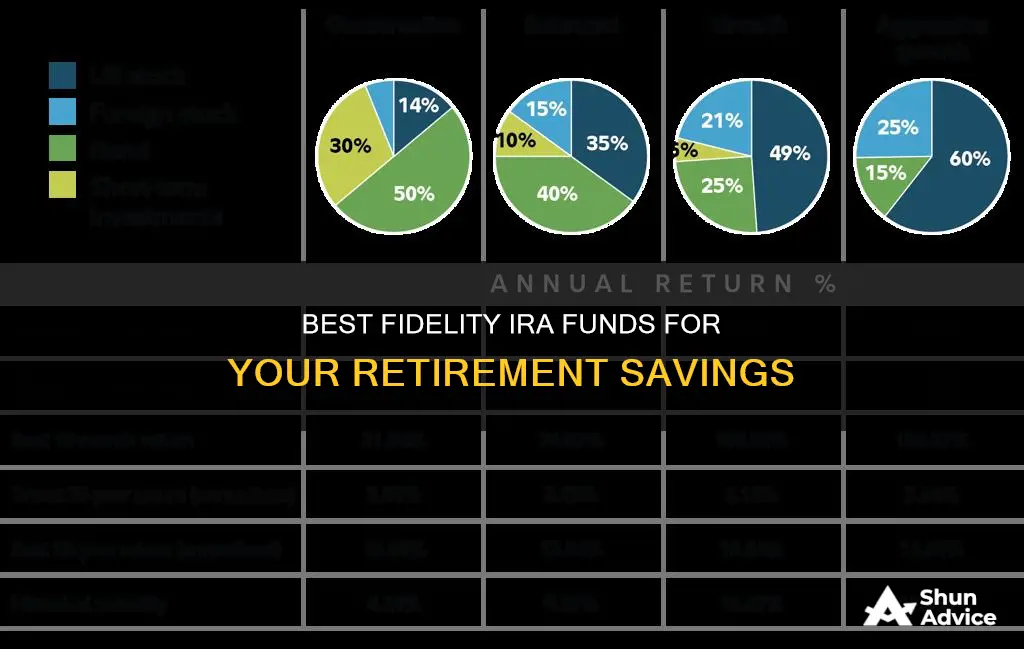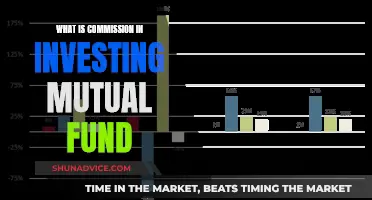
When it comes to investing your IRA, there are a variety of options to consider. Fidelity offers a range of professionally managed options, from fully customized investing to single-fund solutions. One popular option is the Fidelity Freedom® Funds, which provide a diversified single-fund investment strategy with a target retirement date in mind. As you approach retirement, the risk associated with this fund is reduced. Another option is the Fidelity Asset Manager® funds, which offer a diversified single-fund strategy based on your risk tolerance. Additionally, you can choose to manage your own IRA investments with options such as exchange-traded funds (ETFs), index funds, US stocks, and fixed-income options. It's important to consider your financial goals, risk tolerance, and time horizon when making investment decisions.
| Characteristics | Values |
|---|---|
| Annual contribution limit | $7,000 for the year 2024 |
| Additional contribution for people over 50 | $1,000 |
| Deadline for 2024 contributions | April 15, 2025 |
| Investment options | Exchange-traded funds (ETFs), stocks, bonds, short-term investments, target date funds, asset allocation funds, Fidelity Freedom® Funds, Fidelity Asset Manager® funds, Fidelity Managed FidFolios®, Fidelity Go® |
What You'll Learn

Fidelity Freedom Funds
Each Fidelity Freedom Fund, except for the Freedom Income Fund, is managed to a specific target retirement date. For example, the Fidelity Freedom 2020 Fund is designed for investors who plan to make contributions until about the year 2020, at which point they expect to retire. The Freedom Income Fund, on the other hand, is designed for investors who are already in retirement. It seeks to maintain a stable asset allocation that emphasizes bonds and short-term investments, along with some exposure to domestic and international equities.
When choosing a Fidelity Freedom Fund, investors should consider their anticipated retirement year and select the fund that matches that year. It is important to note that the amount of money invested in a Freedom Fund is a personal decision based on an individual's financial situation, goals, and other factors. There are no initial purchase minimums for the Fidelity Freedom Funds.
A Guide to Investing in India's Money Market Mutual Funds
You may want to see also

Fidelity Managed FidFolios
- U.S. Large Cap Index: This strategy focuses on investing in large-cap companies within the United States.
- International Index: This approach involves investing in a diversified portfolio of international stocks across various countries and industries.
- Environmental Focus: This option is designed for investors who want to align their investments with environmental sustainability and socially responsible practices.
- Personalised Stock Portfolios: This choice allows you to work with a dedicated advisor from Fidelity Wealth Management to create a customised investment plan that considers your full financial picture.
By choosing Fidelity Managed FidFolios®, you can benefit from a professionally managed and diversified stock portfolio that considers your investment objectives and preferences. Remember that investing involves risk, and the value of your investments may fluctuate. It is always recommended to carefully consider your investment objectives, risks, charges, and expenses before investing.
Mutual Funds and Investment Trusts: What's the Difference?
You may want to see also

Fidelity Go
Here's how it works:
Getting Started
To get started with Fidelity Go, you'll answer a few questions about yourself and your financial goals. This information includes your risk comfort level, time horizon, and investment goals.
Investment Strategy
Investing Your Money
Once your account balance reaches $10, Fidelity Go will start investing your money according to the investment strategy you've chosen. You can set up recurring monthly, bi-weekly, or weekly transfers, or modify them at any time.
Managing Your Account
Annual Reviews
Financial Coaching
All customers have access to online planning tools. Once your account balance reaches $25,000, you'll also have access to unlimited coaching sessions with trained advisors. These sessions can help with budgeting, debt management, retirement planning, and investing for your future.
Fees
Account Types
- Taxable (individual/joint)
- Simplified Employee Pension Plan (SEP IRA)
- Health Savings Account (HSA)
Municipal Invested Funds: Double-Digit Returns, Worth the Risk?
You may want to see also

Fidelity Asset Manager Funds
Fidelity offers seven Asset Manager funds, with equity exposure ranging from conservative (20%) to aggressive growth (85%). Each fund is named for its exposure to stocks. For example, the Fidelity Asset Manager 20% maintains an equity allocation of around 20%, while the Fidelity Asset Manager 85% maintains an equity allocation of about 85%.
When choosing a fund, it is essential to understand your risk tolerance, time horizon, and investment goals. Stocks are generally considered more volatile than bonds or short-term investments. Therefore, the Fidelity Asset Manager 20% may be more suitable for investors who are averse to risk or have a shorter time horizon. In contrast, the Fidelity Asset Manager 85% may be better for those comfortable with risk and have a longer time horizon.
The seven funds offered by Fidelity are:
- Fidelity Asset Manager 85%
- Fidelity Asset Manager 70%
- Fidelity Asset Manager 60%
- Fidelity Asset Manager 50%
- Fidelity Asset Manager 40%
- Fidelity Asset Manager 30%
- Fidelity Asset Manager 20%
Best Equity Funds: Where to Invest Smartly
You may want to see also

Exchange-traded funds (ETFs)
When choosing investments, it's important to consider your risk tolerance and investment timeframe. If you're comfortable with risk and have a long time horizon, you may allocate a larger percentage of your portfolio to stocks. On the other hand, if you're closer to retirement, you may want to adjust your allocation to be more conservative.
Fidelity offers a range of ETF options, including active equity, factor, sector, stock, and bond ETFs. With no minimum required investment and a low expense ratio, Fidelity's ETFs are accessible and affordable.
- Fidelity Trend Fund (FTRNX): This fund follows a trend-focused strategy, investing in large-cap U.S. growth stocks. It has a high turnover rate, resulting in potential tax inefficiencies, but its recent performance has been strong with a 10-year annualized return of 15.4%.
- Fidelity Nasdaq Composite Index Fund (FNCMX): Tracking the Nasdaq composite index, this fund holds over 3,000 companies, providing significant exposure to small- and mid-cap stocks. Its top holdings include Microsoft, Apple, Nvidia, Amazon, and Meta Platforms. It has a 10-year annualized return of 15.5%.
- Fidelity Select Software and IT Services Portfolio (FSCSX): This sector-specific fund invests exclusively in the software and IT services industry within the tech sector. Its top holdings include Microsoft, Adobe, Salesforce, Oracle, and Palo Alto Networks. With a high expense ratio and portfolio turnover rate, it may be less tax-efficient, but it has delivered strong returns, with a 10-year annualized return of 16.8%.
Understanding Investment Fund Classes: A Comprehensive Guide
You may want to see also







